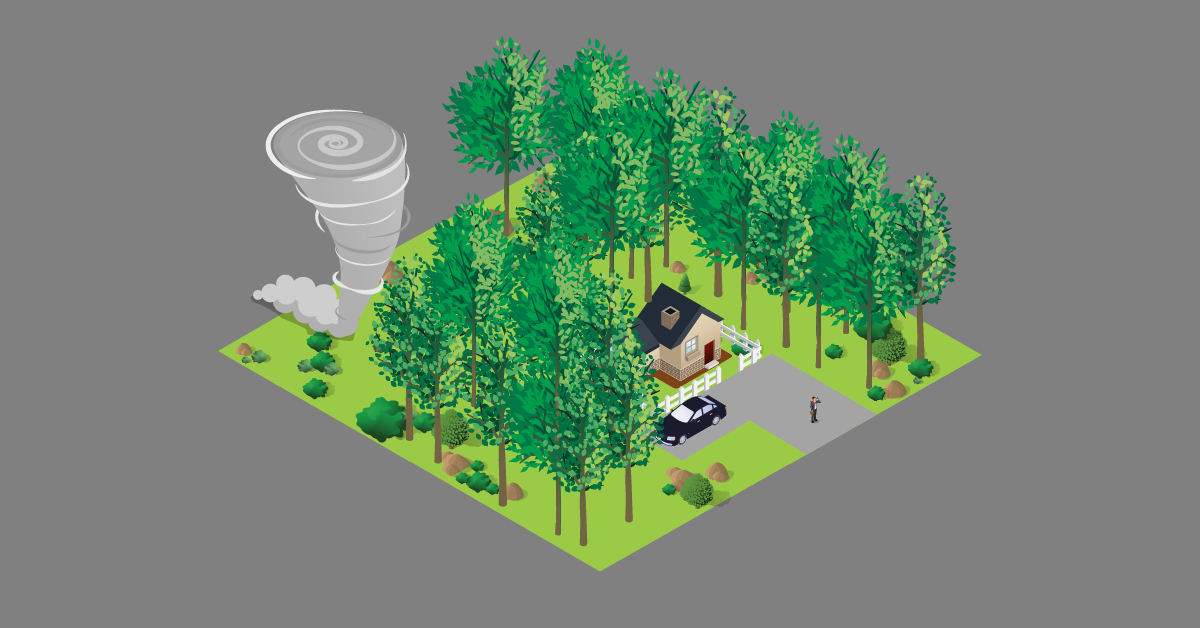CATEGORIES:
Tornado Alley vs. Dixie Alley: A Comparison
April 6, 2023

People have heard the term “Tornado Alley” often enough to know that it is a region of the United States where tornadoes are the most prevalent. However, there is some disagreement over the area’s borders, and whether or not Tornado Alley is “shifting.” While there is no official boundary, the region typically includes the Great Plains states of Texas, Oklahoma, Kansas, Nebraska, South Dakota, North Dakota, Colorado, Iowa, Missouri, and Arkansas. The tornadoes in Tornado Alley are often large, violent and cause significant damage.
Tornadoes are a dangerous and destructive force of nature, and they can occur anywhere in the United States. However, another “alley” has gained attention in recent years because of its own tornadic activity. This area in the southeastern United States is called “Dixie Alley.” Tornadoes in this region are often more dangerous than those in Tornado Alley, though both areas have produced some of the country's deadliest tornadoes.
Dixie Alley comprises parts of Louisiana, Mississippi, Alabama, Tennessee, Georgia, South Carolina, and North Carolina, though, like Tornado Alley, its borders are not official. These states are also known for their high frequency of tornadoes and severe weather events. Tornadoes in Dixie Alley can be particularly destructive due to the region’s heavy population density and the prevalence of mobile homes. Unlike the massive tornadoes of Tornado Alley, tornadoes in Dixie Alley are often smaller and more numerous, but still very dangerous.
Atmospheric Conditions in Tornado Alley
Tornado Alley is particularly prone to tornadoes due to atmospheric conditions. In the spring and summer, warm, moist air from the Gulf of Mexico collides with cool, dry air from Canada and the Rockies. When these two air masses meet, they can create strong thunderstorms, which can then produce tornadoes. In addition, the area’s flat terrain allows tornadoes to travel long distances and maintain (or gain) strength.
The conditions in Dixie Alley are somewhat different from those that create tornadoes in Tornado Alley.
Atmospheric Conditions in Dixie Alley
Like Tornado Alley, in Dixie Alley, the primary driver of tornado activity is the presence of warm, humid air from the Gulf of Mexico. However, it collides with cooler, drier air from the North and West. When these two air masses meet, they can create strong thunderstorms that can produce tornadoes. Storms in Dixie Alley move slower and get stuck, which leads to prolonged periods of unsettled weather and multiple rounds of thunderstorms and tornadoes over several days.
One reason that tornadoes in Dixie Alley are more dangerous is the higher population density in the region. The Southeast is one of the most populous regions of the United States. Tornadoes in heavily populated areas can result in more injuries and fatalities due to the large number of people exposed to the storm. In addition, the prevalence of mobile homes in Dixie Alley makes residents more vulnerable to the destructive power of tornadoes. Mobile homes are less sturdy than traditional houses and are more prone to being damaged or destroyed by high winds.
Geographic Differences Between Tornado Alley and Dixie Alley
Another factor that creates a notable difference between the two regions is geography. The central Great Plains, which make up the original Tornado Alley, is relatively flat and open, making it easier for people to find shelter from a tornado. In some areas of Tornado Alley, a tornado can be spotted many miles away. This clear view often creates the mindset that it’s okay to watch the storm as it travels across the plains. In contrast, the Southeast is characterized by rolling hills and forests, which can make it more difficult for people to find shelter from a tornado.
The Southeast experiences high humidity and instability in its atmosphere, creating the perfect conditions for the formation of severe thunderstorms and tornadoes. In addition, the region experiences temperature extremes, with hot summers and cold winters, which can create unstable atmospheric conditions that lead to severe storms.
Tips for Tornado Preparedness
Whether you live in Tornado Alley or Dixie Alley, it is important to prepare for severe weather and have a plan for sheltering during a tornado. You should be aware of the increased risk of tornadoes in your region and plan ahead. One of the most effective ways to stay safe during a tornado is to have a plan for what to do in the event of a storm. This may include having a designated shelter or safe room in your home and a supply of nonperishable food, water, and other essentials in case you need to evacuate. It is also a good idea to stay informed about the weather and to have a reliable way to receive weather alerts, such as a weather radio or access to a local news source. This will allow you to stay aware of any severe weather warnings and to take appropriate action and plan to protect yourself.
We are currently beginning what has already proven to be a very active tornado season. If you don’t have a plan, talk to Survive-A-Storm today about a shelter for your home.




